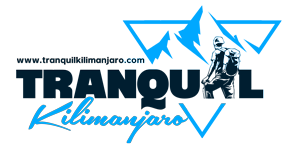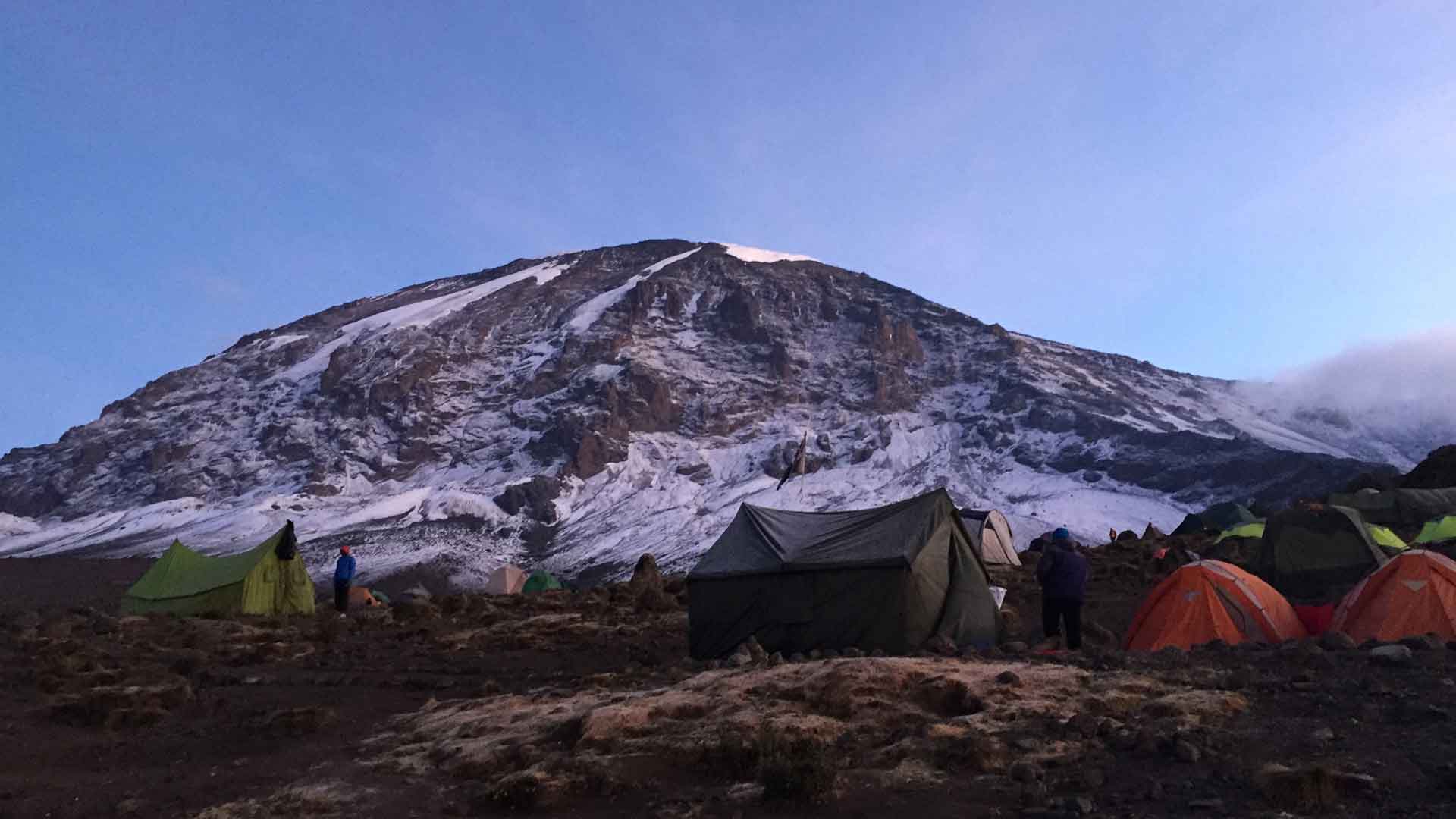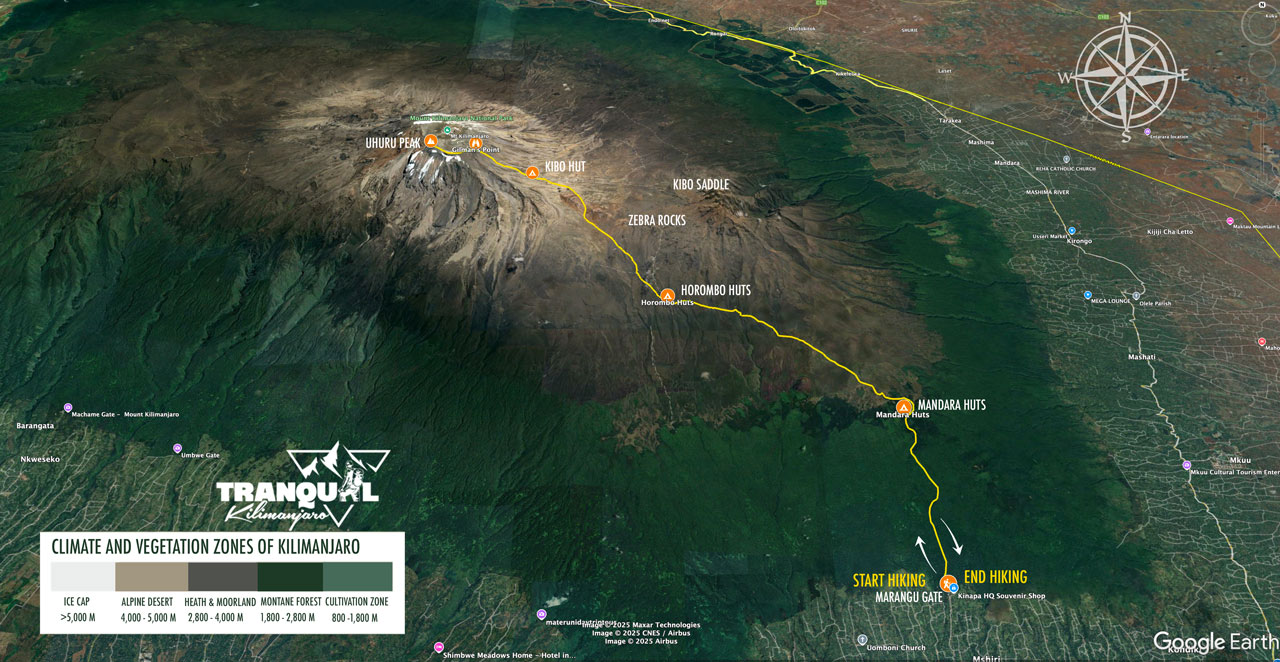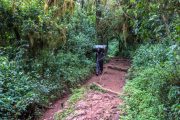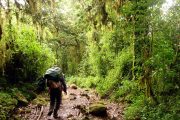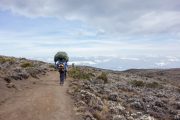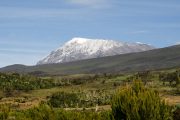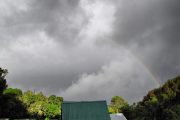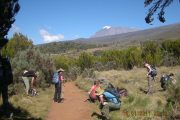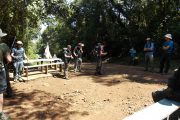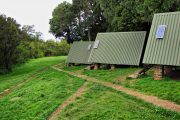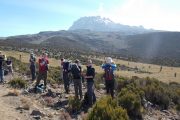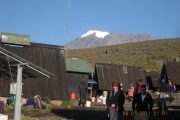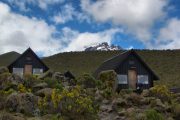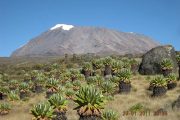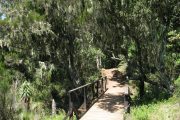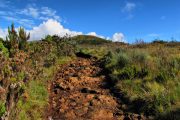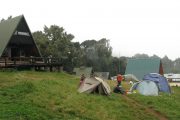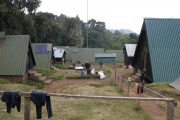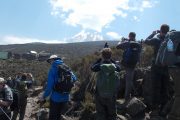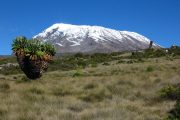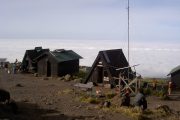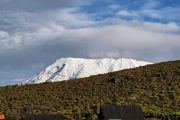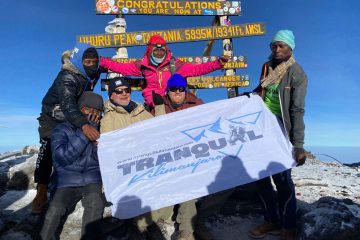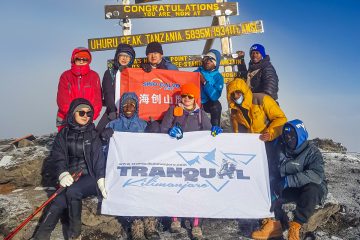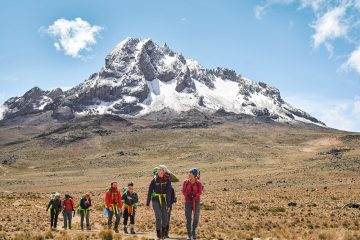Difficulty
Contrary to common belief, this route is challenging due to its steep ascent, especially on the 5-day schedule where acclimatization can be an issue. The 6-day itinerary is slightly easier, but still requires a good fitness level. For preparation tips or a training schedule, visit our training program [link].
Food & Drink
Nutrition is key on your climb, especially as altitude can reduce your appetite. Our chef has designed menus that are delicious, nutritious, and energizing. Daily meals include fresh fruits and vegetables, with meat available at the start and replenished at Horombo Huts on southern routes. After summiting, enjoy an “All Day English Breakfast” at Kibo hut, customized to your egg preference. Before departure, try local Tanzanian dishes like Njegere and Machalari.
Breakfast: Includes porridge, sausage, eggs, toast, and hot beverages like tea, coffee, or hot chocolate. More food is available upon request.
Lunch: Can be packed or hot, featuring items like boiled eggs, sandwiches, chicken, crisps, a snack bar, fruit, and a drink.
Afternoon Tea: Served at camp with hot drinks, peanuts, popcorn, biscuits, and energy snacks.
Dinner: Starts with soup, followed by main dishes like chicken curry or spaghetti bolognese, with sides of vegetables and carbs, ending with desserts like pancakes or banana fritters with maple syrup or Nutella.
Accommodation
Your stay details and meal plans are listed in your itinerary, all based in Moshi for pre- and post-climb, with safari accommodations in Arusha. Be aware of potential power and water interruptions in Tanzania affecting hot water availability.
On the Mountain: The Marangu route offers huts instead of tents. Small, bunk-bed rooms for four, except at Kibo where it’s dormitory-style. Mattresses and pillows are provided, but bring your sleeping bag. Solar lights are available, no outlets, and meals are served indoors. Bathrooms have cold water at Mandara and Horombo, with basic facilities at Kibo.
Transport
We provide top-quality vehicles and drivers for all transfers. Note that rear seatbelts might not be standard in Tanzania, but we prioritize vehicles with them. If you’re not satisfied with the vehicle or driver, speak up. Routine police checks are standard.
Luggage
Climbing Bag Weight: Limited to 15kg per porter, including your sleeping bag. Bags are weighed at the hotel; excess requires additional porters at $25/day.
Plastic Bag Ban: Single-use plastic bags have been banned since June 1, 2019. Use sustainable alternatives. Zip-lock bags are still permitted for airport security.
How Do I Get There?
Fly into Kilimanjaro International Airport (JRO) from the UK or US, often with a stop in Amsterdam via KLM. Tours start in Moshi, a brief drive from JRO. Avoid Nairobi connections. Consider flights from North America with airlines like Turkish Airlines, Emirates, or Qatar. Post-climb, fly to Zanzibar from Dar es Salaam for a beach getaway.
Travelling Responsibly
Since 2025, we offset your trip’s carbon emissions (excluding flights). Use our eCO2 calculator for flight offsets.
Fitness and Training
Check our Kilimanjaro Training Guide for fitness tips.
Budget & Change
Bring new US dollars since Tanzanian Shillings are scarce abroad. Use ATMs or airport exchange for local currency. Inform your bank about your travel plans.
Tips
Follow Kilimanjaro Porters Assistance Project guidelines: $6-10/day for porters, $20/day for guides, $12-15/day for assistant guides and cooks. Extra for summit night porters.
Leave No Trace Adventure
At Tranquil Kilimanjaro, we aim to leave the mountain cleaner than we find it, with a dedicated clean-up team.
Safe Storage of Luggage
Store unnecessary items securely at our facilities or in hotel storage.
Dedicated Support Team
With over 200 professionals, your trip is meticulously managed, ensuring support from booking to logistics.
All Park Fees (All inclusive treks)
All park fees are included, covering camping, conservation, rescue, and crew fees.
Professional Guides and Porters
Guides with at least seven years of experience provide not only navigation but also cultural and ecological insights.
Skilled Expedition Team
Our team includes porters, camp managers, and chefs, all dedicated to your comfort and safety.
